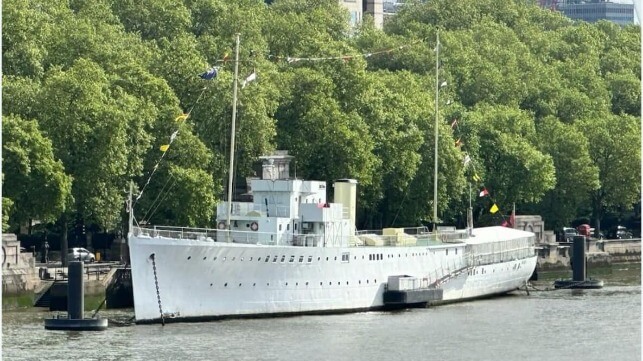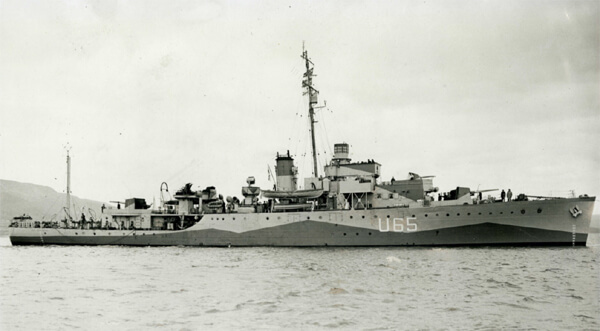UK WWII Warship Regains Royal Status in Effort to Save it From Scrapping

The British monarch has moved to save a historic World War II warship from scrapping by approving its name change, a development that could be instrumental in helping a charity organization keep the ship afloat on the River Thames. The renaming, which they hope will raise the visibility of the vessel, coincides with the ship’s 90th birthday and 85th anniversary of Britain’s declaration of war on September 3, 1939.
King Charles approved the warship, Wellington, which is the only United Kingdom surviving vessel from the Battle of the Atlantic, to regain its His Majesty’s Ship (HMS title). Built in 1934, the 1,200-ton ship is the last of 13 Grimsby-class sloops built between the wars for the Royal Navy, Royal Australian Navy, and Royal Indian Navy for escort/anti-submarine duties. The ship lost her status when she was decommissioned from the Royal Navy in 1947.
The Wellington Trust, which is the custodian of the ship, has desperately been seeking to save her from scrapping through a campaign to raise £50,000 ($65,500) to support the maintenance efforts of the iconic vessel.
The ship is famed for its role in the Battle of the Atlantic, the longest battle of WWII. During the war, Wellington conducted 103 convoy escorts protecting vital maritime supply lines and merchant navy vessels making these dangerous voyages. The ship also saved hundreds of lives while conducting her convoy duties. Over the period of the war from September 1939 until its end in May 1945, more than 70,000 Allied navy and merchant sailors were killed while nearly 3,700 military and trade ships were lost.

During World War II her primary role as a convoy escort (Wellington Trust)
Wellington was also instrumental in the destruction of a German U-boat and participated in Operation Dynamo, the evacuation of troops from Dunkirk. The ship was among the vessels that survived the ordeal of Operation Dynamo in which more than 305 vessels were lost.
When she was decommissioned in 1947, Wellington was paid off and sent to Pembroke Broke for breaking up but was saved by the Honourable Company of Master Mariners. The ship then steamed for the last time to Chatham, where her engine was stripped out and the space was converted into a wood-paneled courtroom, along with other major modifications. Wellington was then towed to her current berth at Temple Stairs, Victoria Embankment where since 1948 she has remained moored near Temple station.
The ship is however facing a tough battle to continue to be a regular sight on London’s Embankment. In May, the Wellington Trust admitted challenges in keeping the ship afloat due to the effects of the COVID-19 pandemic, rising cost of living, and the ship’s closure for a year of inspection and repair, factors that deeply affected its fundraising endeavors.
The Trust is now optimistic the name change will unlock donations for the conservation and preservation of the ship. The charity is hoping to raise at least £50,000 ($65,500). The funds will also support the implementation of a new business plan to make her more accessible to the public as a visitor attraction.
“This change of name in her 90th anniversary year is a true testament to her heritage as the sole surviving dedicated Battle of the Atlantic warship in Europe,” said Professor Dominic Tweddle, chairman of the Trust. “There is no better day for HMS Wellington to adopt her new name, on the 85th anniversary of the start of the Battle of the Atlantic.”
Historical accounts show the Battle of the Atlantic began on a Sunday with the sinking of the steamer SS Athenia which was torpedoed by a German U-boat killing 117 civilian passengers and crew. It ended just hours before the Germans surrendered in May 1945.
No comments:
Post a Comment